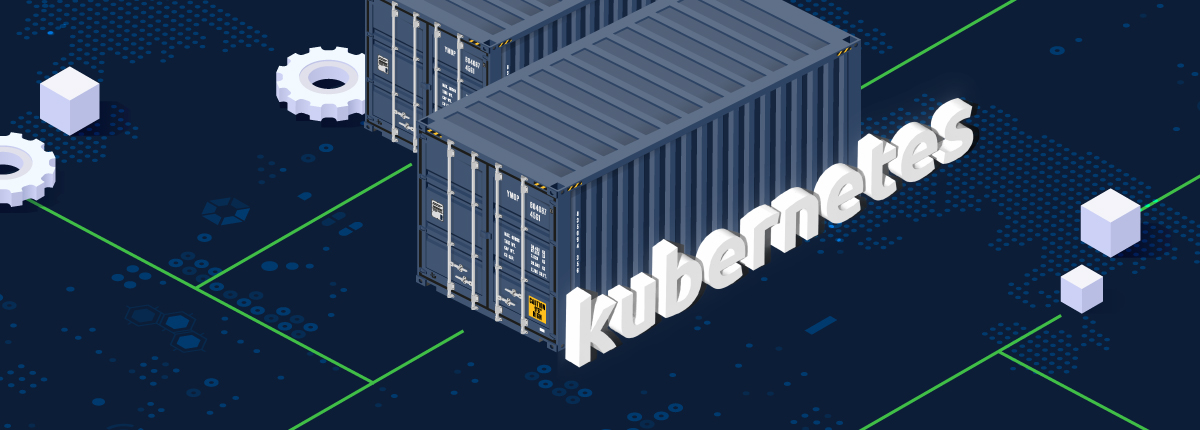Kubernetes Registry
Kubernetes, also known as K8s, has proven to be one of the most important open-source projects released in the last decade. From Capital One to Huawei to The New York Times, the container orchestration platform has proven integral to building and scaling countless software projects across the globe. Of course, Kubernetes isn’t the only tool teams need to deliver software and maintain performant DevOps pipelines. In fact, a Kubernetes Registry is one of the most important complements to K8s.

Here we’ll take a closer look at what Kubernetes registries are, how they work, and their benefits.
The importance of Kubernetes in DevOps pipelines
Before we explore the specifics of Kubernetes registries, let’s provide some context by recapping the benefits of K8s to DevOps pipelines. Microservices and containers — like Docker Containers — have become the building blocks of modern software applications. K8s provides a way for teams to manage container deployment, load balance, monitor container health, and scale applications up or down automatically. Additionally, because it abstracts away many infrastructure complexities, K8s is conducive to easy adoption of configuration and infrastructure as code efforts that can help automate continuous integration/continuous delivery (CI/CD) pipelines.
Interested in a real-world example of K8s in a CI/CD pipeline? Check out How I Leaped Forward My Jenkins Build with JFrog Pipelines.
What is a Kubernetes registry?
In simple terms, a Kubernetes registry is a registry that stores all the components needed for K8s apps. That means the operating system-level packages , app packages, container images, and Helm Charts (Helm is the K8s package manager) all reside in the registry.
Benefits of a Kubernetes registry
Of course, it is possible to use separate package management solutions for each component in your app. For example, Docker Hub for your container images and a Yum repository for your operating system packages. However, with multiple developers working on individual components and changes happening at a rapid pace, that approach has downsides and quickly becomes difficult to manage as a team scales. Additionally, if you need a private repository to maintain strict security, access, and version controls, depending on multiple discrete solutions becomes even more difficult.
These challenges are where a dedicated binary repository manager acting as a Kubernetes private registry can help. Hosting your own private repository also gives you greater access and security controls, but there are operational benefits as well. By using a K8s repository, you can streamline workflows and reduce complexity by having a central source for all your app’s components. Additionally, you can gain deep visibility into the code-to-K8s’ cluster process and better understand dependencies and versioning in your pipelines.
JFrog Artifactory as a Kubernetes registry
Now that we understand the general benefits of a Kubernetes registry, let’s take a look at what a specific solution looks like. One of the most popular approaches to K8s registries is to use JFrog Artifactory. With Artifactory, teams gain a universal repository manager that can handle CI/CD needs organization-wide regardless of package format.
Using Artifactory as your K8s repository enables end-to-end “code to cluster” visibility and makes managing your K8s components and DevOps pipelines simpler and more secure. Specifically, advantages of Artifactory and the JFrog platform include:
- Centralized single source of truth for components. Beyond supporting the K8s package manager Helm and Docker images, Artifactory supports all major package types (e.g. Maven, RPM, Ruby Gems, npm, etc). This means your team can have a centralized, secure, and authoritative source for every component of your K8s apps. Additionally, by using virtual Docker registries, you can have a single URL for management of all your Docker images.
- Deep visibility. Artifactory allows you to capture detailed metadata such as build information and license analysis. Additionally, unlike simple Docker registries, with JFrog you can view and manage dependencies and relationships between Docker images.
- Enhanced security. With Artifactory, you can host all your components — including Docker Images and Helm Charts — locally and implement granular access controls. This enables you to ensure secure provisioning of your K8s apps. Additionally, with JFrog Xray, components can be scanned for vulnerability and licensing issues.
- Broad ecosystem of integrations. The JFrog platform comes with a wide range of integrations for popular DevOps tools and platforms. The “too integrated to fail” paradigm means that whatever tools you are using today, it is likely JFrog Artifactory can enhance your CI/CD pipeline.
- Unlimited Docker Hub access. To streamline the development of cloud-native apps, JFrog Platform SaaS cloud subscribers — including the free tier on Azure, AWS, and GCP — have unlimited access to Docker Hub and Docker Official images.
Final thoughts: Getting started with your first K8s registry
As we can see, using a Kubernetes Docker registry makes managing all the components of your app easier and enhances your visibility into dependencies and versions. If you’re ready to get started with your first K8s registry, you’re welcome to sign-up for a free trial of JFrog Artifactory today.



